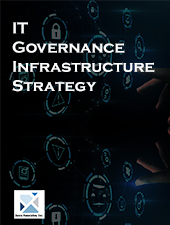Compliance and IT Strategy is Based on Grounded Infrastructure
Federal and state government regulations can be a big problem for today's organizations. There are more than 100 such regulations in the U.S. alone, and that number continues to grow. These are in addition to industry-specific mandates. They are all designed to safeguard the confidentiality, integrity, and availability of electronic data from information security breaches. So, what are the consequences if your organization fails to comply? Heavy fines and legal action. In short, it's serious.
Read On Order Compliance Management Kit Download TOC
 If companies are going to grow into entities that are truly greater than the sum of their parts, they need to respond faster and smarter to market challenges with better decision-making capabilities. One vital concern, which is often overlooked in discussions of information visibility, is the need for stringent alignment of departmental objectives with corporate strategy.
If companies are going to grow into entities that are truly greater than the sum of their parts, they need to respond faster and smarter to market challenges with better decision-making capabilities. One vital concern, which is often overlooked in discussions of information visibility, is the need for stringent alignment of departmental objectives with corporate strategy. Business activity alignment is the ability to take your theories and put them into practice - in essence, taking the strategic plan and translating it into tactical steps. This results in more clearly defined executive roles, as well as an enhanced ability to leverage technology towards growth. Additional business benefits include achieving a balance of cost and investment towards organizational goals; a balance between internal limits and external growth; enhanced collaboration for better decisions and departmental alignment; and a 360-degree view of customers for better customer experiences as well as marketing and sales efforts.
To ensure alignment, management should focus on the development of a common set of metrics within the organization, which naturally requires a common set of definitions. Typically, different parts of the organization develop metrics specific to themselves and their purposes - resulting in a lack of consistency in reporting and an inability to aggregate information to senior management. According to a 2007 report 57 percent of companies do not have a common set of metrics to work with.
The challenges become apparent when management tries to aggregate departmental information to make enterprise decisions. A lack of consistent definitions and metrics makes it particularly difficult for management to determine which way alignment needs to tilt, if at all. One caveat: small and midsize companies must strike a balance between letting groups identify and define the best metrics for themselves versus defining metrics in the best interests of the organization as a whole.
The result of strict alignment of activities with corporate strategy is that individual departments are no longer paying lip service to the business plan; instead, it serves as a coherent action plan, with all cogs working toward the same objective instead of grinding the machine to a halt.
Defining the optimal IT infrastructure is a critical task that can no longer wait with all of the changes mandated by PCI-DSS, HIPAA, and Sarbanes-Oxley requirements that change an enterprise's operating environment. The template helps you:
In order comply with the PCI-DSS requirements the IT infrastructure needs to be defined in such a way that an enterprise can build and maintain a secure data scheme, databases, application systems, network, network components, and other items related to authorization, data retention, data storage, data transmitting and security - including disaster recovery and business continuity plans. The IT Governance Infrastructure, Strategy, and Charter Template address these needs directly.
- IT Infrastructure, Strategy, and Charter Summary (see sample page)
- Strategy and Charter Statement of Authority
- IT Management Structure
- Compliance
- Personnel Practices
- Controls
- Application Development Standards
- Service Requests
- Local Area Network
- Back-up and Recovery
- Disaster Recovery Plan
- Security
- Access Control - Physical Site
- Access Control - Software and Data
- Facility Requirements
- ISO 27001 & ISO 27002 Audit Checklist
- HIPAA Audit Program
- Full Job Description for CIO large enterprise
- Full Job Description for CIO small enterprise

